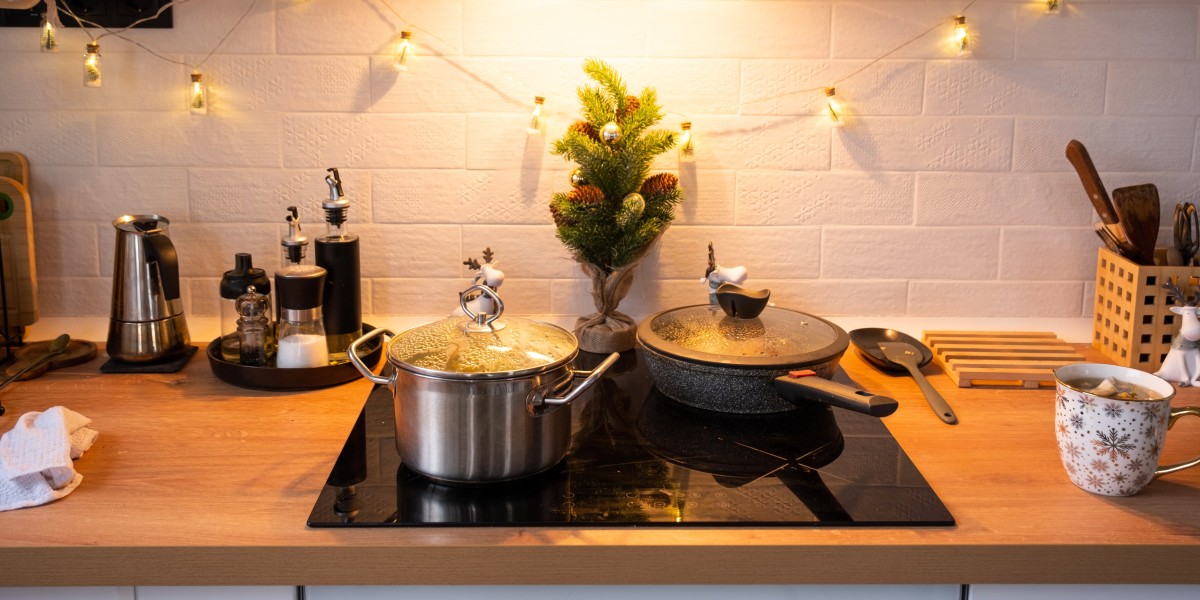The Benefits and Design Considerations of a Kitchen with a Built-In Oven
In modern kitchen design, built-in ovens have ended up being a popular feature, offering both performance and aesthetics that accommodate modern-day way of lives. This post delves into the advantages of including a built-in oven into the kitchen area and highlights necessary style factors to consider to guarantee a cohesive and useful kitchen environment.

Comprehending Built-In Ovens
Built-in ovens are developed to be seamlessly integrated into kitchen with built in oven cabinets, which distinguishes them from conventional freestanding ovens. These appliances come in numerous configurations, including single-wall ovens, double-wall ovens, and even microwave that share the very same integrated cabinet area.

Common Types of Built-In Ovens
| Type | Description | Suitable Use |
|---|---|---|
| Single Wall Oven | A basic oven with one compartment for baking and roasting. | Small cooking areas or daily baking. |
| Double Wall Oven | 2 different oven compartments enabling for synchronised cooking. | Large households or regular bakers. |
| Mix Oven | A microwave and conventional oven in one unit. | Quick meals and flexible cooking alternatives. |
| Steam Oven | An oven created specifically for steam cooking. | Health-focused cooking and elaborate dishes. |
Advantages of Built-In Ovens
The appeal of built-in ovens can be attributed to several essential benefits, including:
1. Space Efficiency
Built-in ovens are designed to fit within existing kitchen cabinetry, maximizing important floor space. This feature is especially advantageous in smaller kitchen areas, where every square foot counts.
2. Structured Appearance
The seamless combination of a built-in oven develops a refined appearance in the kitchen. Available in numerous finishes, built-in ovens can match or match cabinets, using a contemporary and unified design visual.
3. Enhanced Functionality
Built-in ovens often offer innovative functions, such as wise innovation, several cooking modes, and even self-cleaning options. This can improve cooking experiences and enhance the performance of meal preparation.
4. Enhanced Accessibility
With proper setup of a built-in oven, users can increase ease of access, preventing the need to bend over to reach a lower oven compartment. Eye-level cooking appliances allow cooks to monitor their dishes quickly and lower the danger of burns from bending down to look at a baking product.
5. Energy Efficiency
Numerous modern-day built-in ovens use sophisticated cooking technology that can result in lower energy intake. Features like convection cooking can lower cooking times while making sure even heating, ultimately saving energy.
Design Considerations for a Kitchen with Built-In Ovens
While built-in ovens use lots of benefits, careful consideration in the style stage is important to optimize their benefits and incorporate them successfully into the kitchen layout. Here are some crucial aspects to consider:
1. Cabinet Configuration
When preparing for a built-in oven, property owners must carefully think about cabinet designs and configurations. Appropriate ventilation is crucial for proper operation. It's necessary to leave enough area for air flow, which can differ depending upon the oven model.
2. Height Preference
The installation height of the oven must be figured out based on the primary users. A built-in oven situated at eye level can make it easier to utilize, especially for those who often cook.
3. Complementary Appliances
In a kitchen setting, built-in ovens frequently match other built-in appliances such as microwave ovens and warming drawers. Choosing appliances that work well together can further streamline the kitchen's style.
4. Visual Choices
Choosing surfaces and colors that balance with the overall kitchen design is essential. Built-in ovens are available in different options, consisting of stainless steel, black, and even custom cabinet completes that can vanish effortlessly into the kitchen cabinetry.
5. Spending plan Considerations
Built-in ovens can range considerably in rate, from affordable choices to high-end designs packed with features. It's vital to set a practical budget that permits for the preferred requirements without jeopardizing the total kitchen remodelling.
FAQs
1. What is the difference in between a built-in oven and a freestanding oven?
Built-in ovens are integrated into cabinets and provide a smooth look, while freestanding ovens are standalone units that can be moved quickly.
2. Do built-in ovens require expert installation?
Yes, built-in ovens generally need expert installation due to their integration with cabinetry and electrical requirements.
3. Are built-in ovens more pricey than standard ovens?
In general, built-in ovens can be more expensive due to their setup process and advanced features, however there are numerous options readily available to suit varying spending plans.
4. How do I keep a built-in oven?
Regular cleaning and maintenance, such as utilizing the self-clean function, inspecting seals, and guaranteeing appropriate ventilation, are essential for keeping a built-in oven.
5. Can built-in ovens be utilized in smaller sized kitchens?
Yes, built-in ovens can be helpful in smaller kitchen areas because they make the most of area efficiency and can be set up at eye level for benefit.
Integrating a built-in oven into a kitchen design is an exceptional option for enhancing functionality and aesthetics. By thinking about the design tips and benefits gone over in this short article, property owners can produce a harmonious kitchen area that accommodates their cooking requirements while looking elegant and stylish. Whether renovating an existing kitchen or developing a new one, built-in ovens provide a level of elegance and practicality that lines up flawlessly with modern culinary practices.








